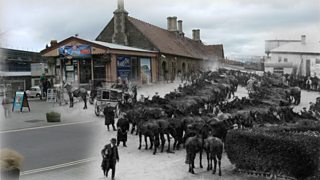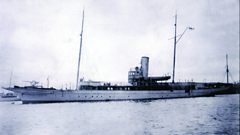Port Eliot Estate, St Germans: Rain of Pearls
The women who donated their jewels to fund the war effort
During the Great War, Port Eliotβs Countess, Emily Harriet St Germans - known as Lily β was a member of a Red Cross Committee. In the Spring of 1918, the committee sent out an appeal for women to donate their pearls in aid of the war effort and for the benefit of the sick and wounded.
During her research for the World War One centenary, Lady Catherine St Germans came across an article in the Times newspaper archive describing the extraordinary response.
βBy December 1918, when the appeal closed a steady rain of pearls nearly four thousand, in all in six months. Women across the aristocracy, royal family, through the class system that was so rigid then, donated their pearls,β explains Lady Catherine St German, who is the current chatelaine of Port Eliot.
Many of these pearls had been handed down through generations and regarded as extremely precious.
βThey were a treasured item so really that would have been quite a big thing for a lady to do. Natural Pearls these days are worth a lot of money. Pearls were regarded more highly than diamonds,β says Alice Williams from Cornwall Pearls.
Lilyβs son, John Cornwallis Eliot, the 6th Earl of St Germans was known to family and friends as Mousie. A Sandhurst graduate; he served as a captain in the Scots Guards fighting at Ypres and the Somme during the Great War.
Mousie, the 6th Earl of Port Eliot was awarded the Military Cross in recognition of several acts of gallantry.
Although he survived the war, tragically he was seriously injured in a riding accident at Taunton and died in 1922.
Location: St. Germans, Saltash, Cornwall PL12 5ND
Image: Emily Harriet, Countess of St Germans (known as Lily) painted by Sir William Richmond (1874). Photograph courtesy of Catherine St Germans.
Duration:
This clip is from
Featured in...
![]()
ΒιΆΉΤΌΕΔ Radio Cornwall—World War One At ΒιΆΉΤΌΕΔ
Places in Cornwall that tell a story of World War One
More clips from World War One At ΒιΆΉΤΌΕΔ
-
![]()
The loss of HMY Iolaire
Duration: 18:52
-
![]()
Scotland, Slamannan and the Argylls
Duration: 07:55
-
![]()
Scotland Museum of Edinburgh mourning dress
Duration: 06:17
-
![]()
Scotland Montrose 'GI Brides'
Duration: 06:41







